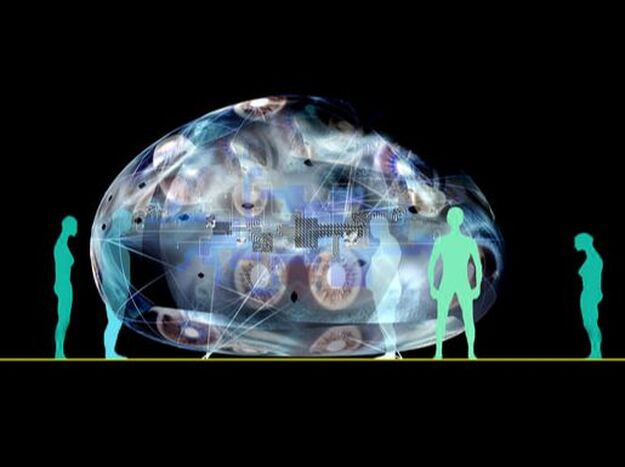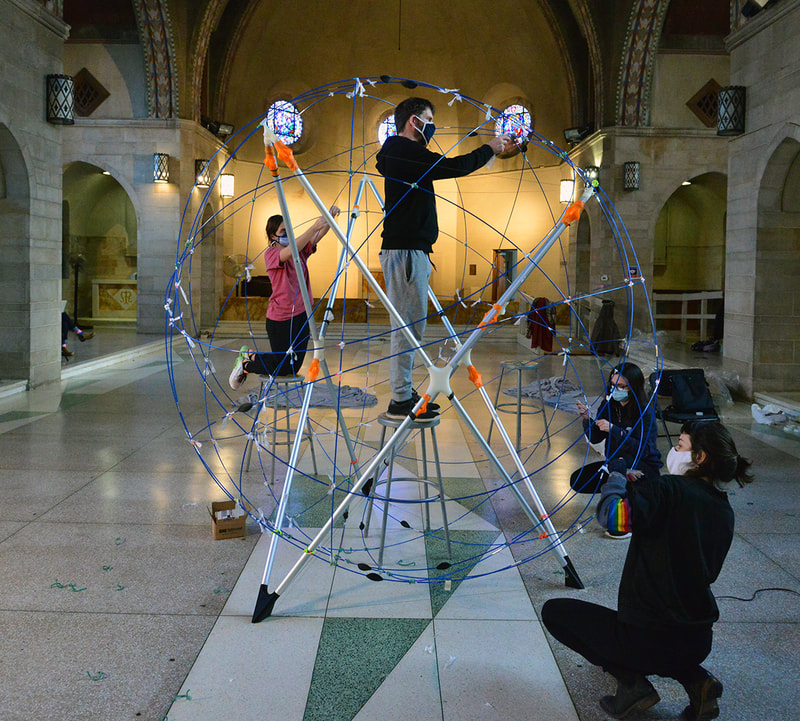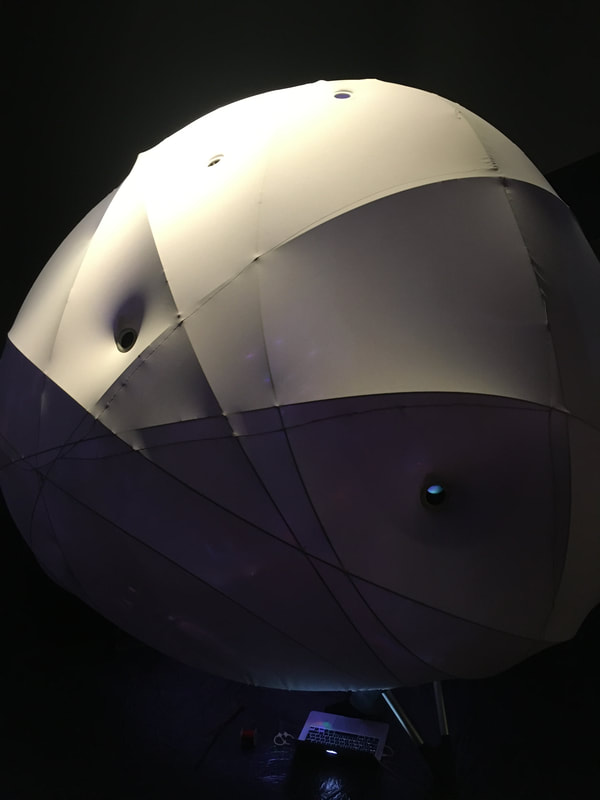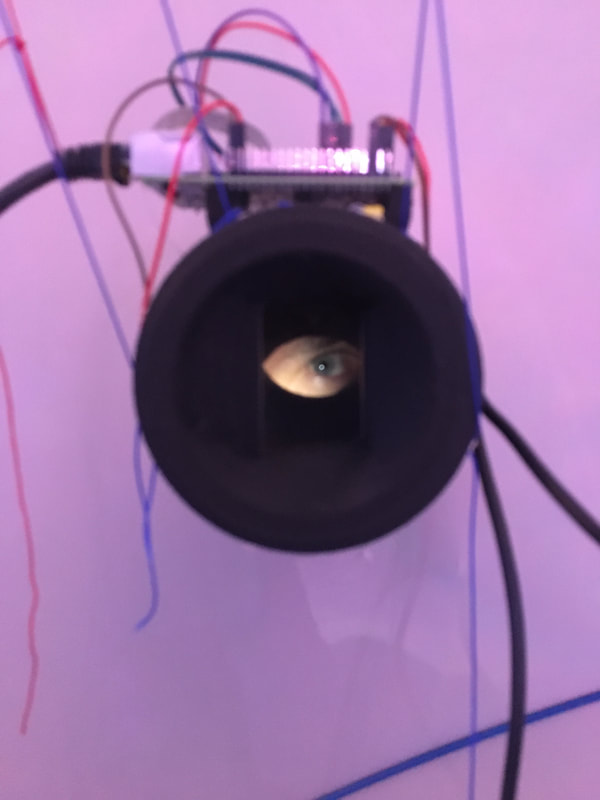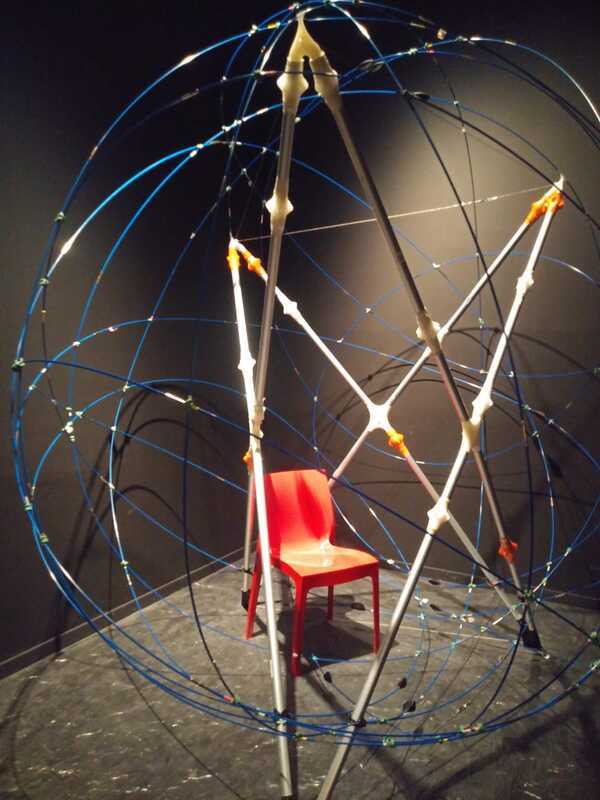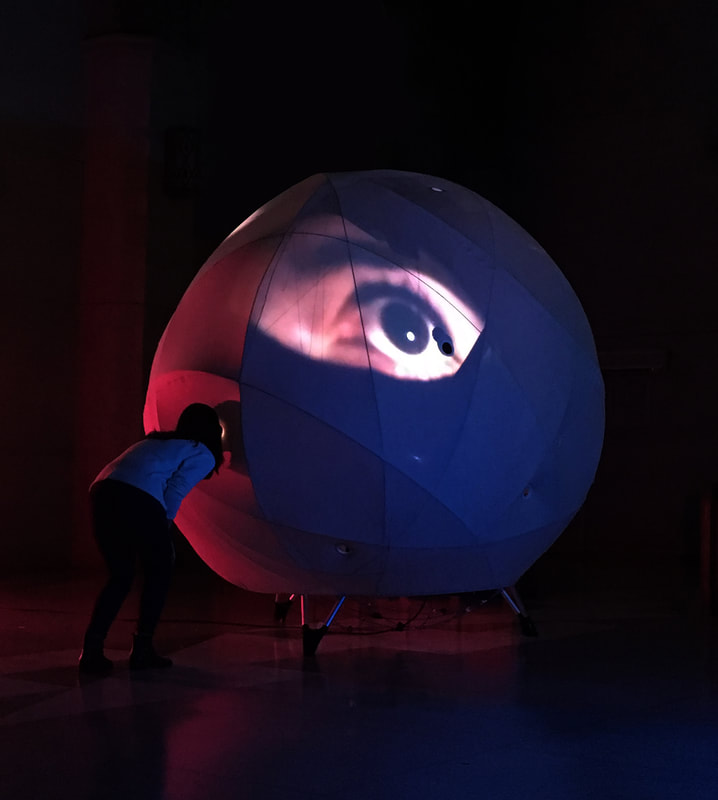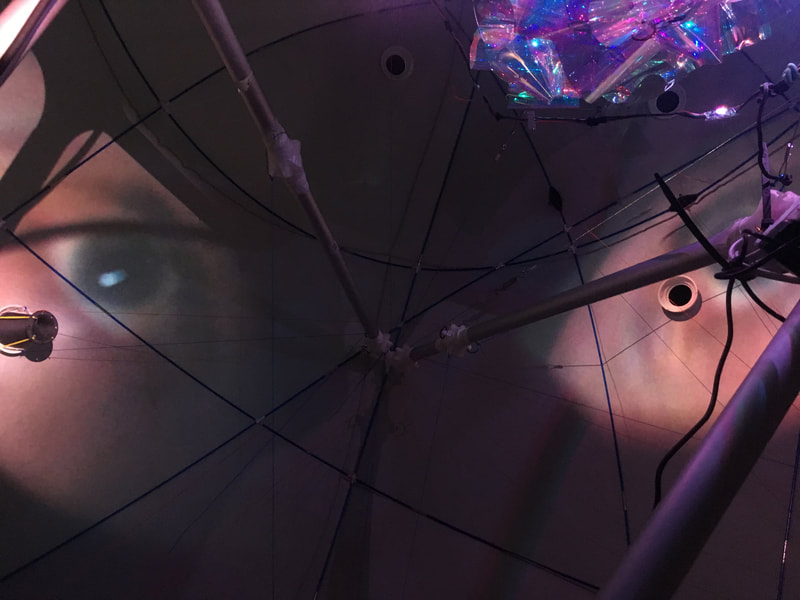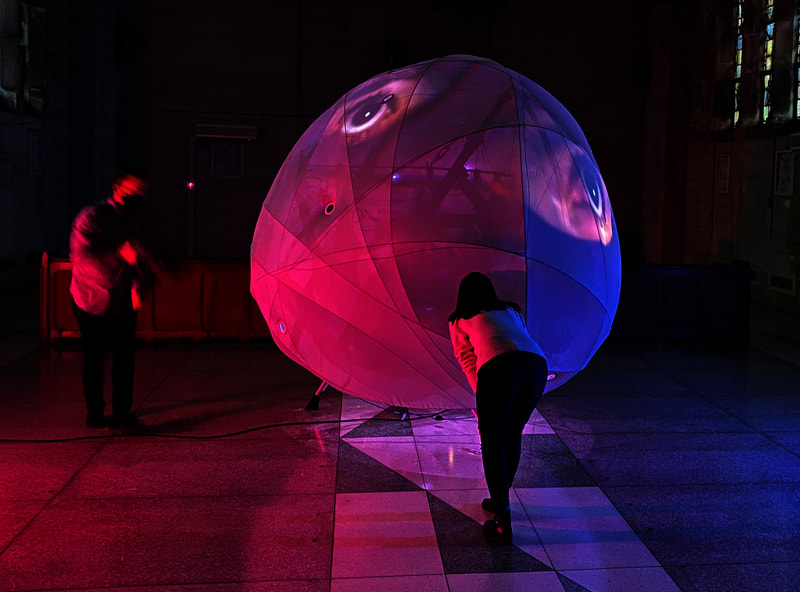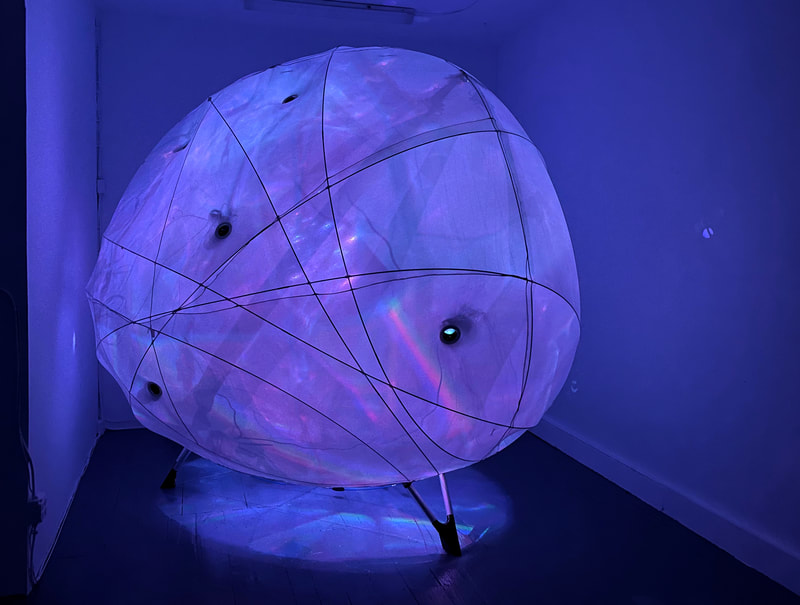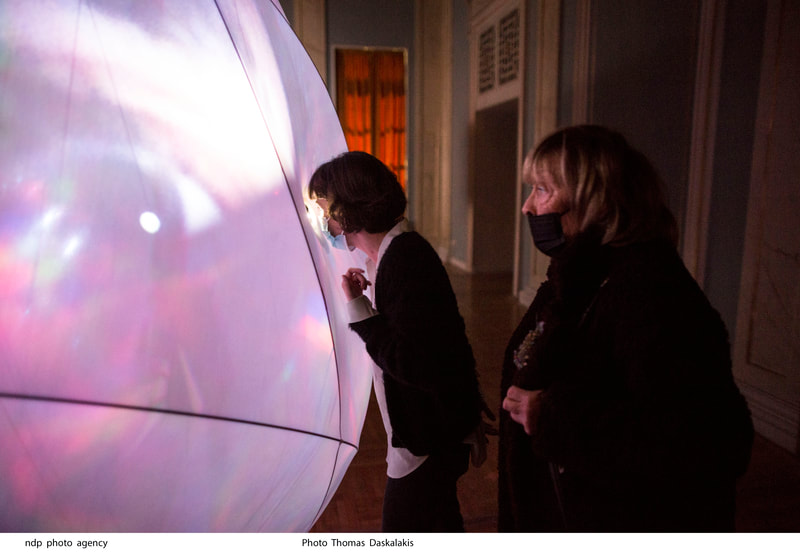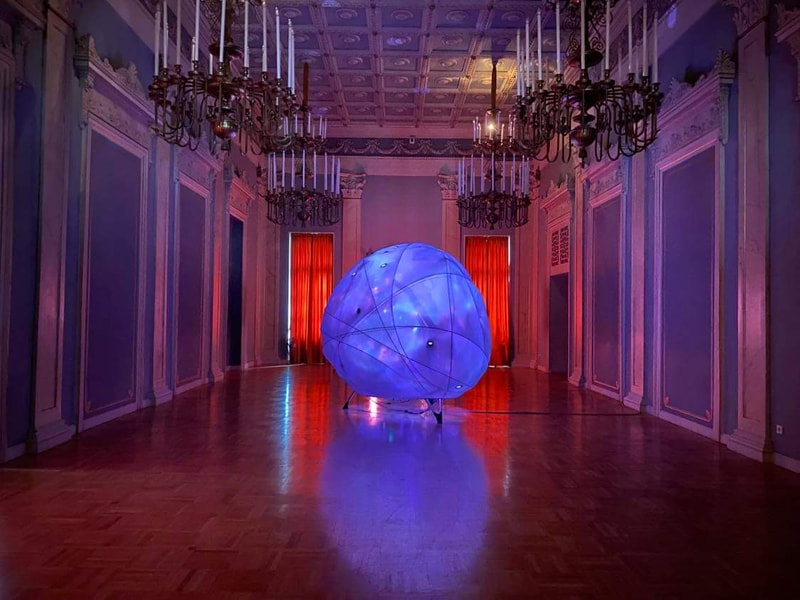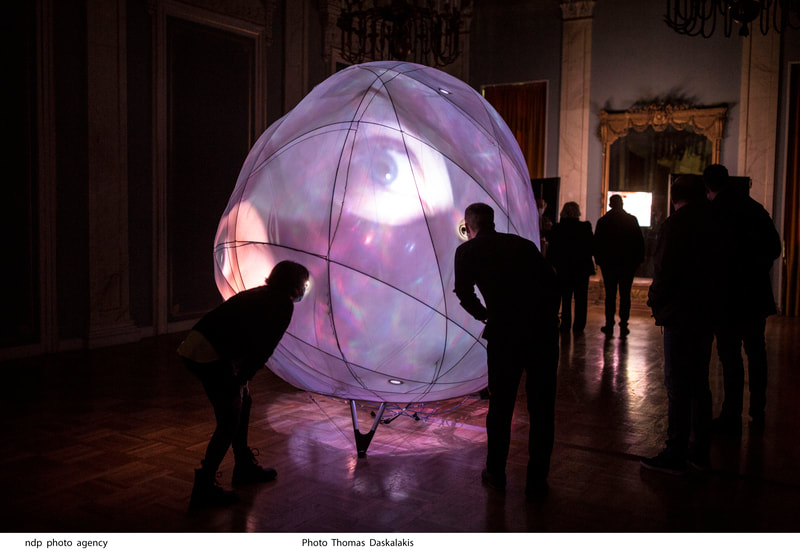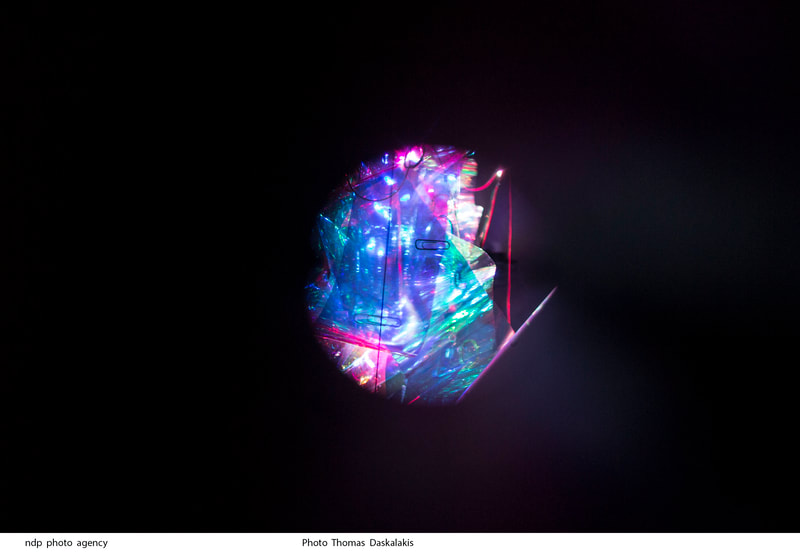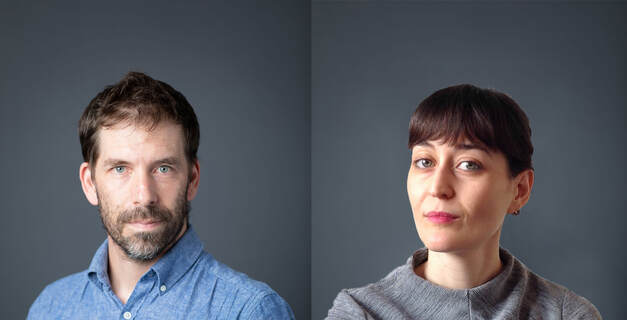|
Synesthesia is an atmospheric, soft interface with an infrastructural core that allows no physical bodies inside but rather consumes them virtually. It is a manifestation of bodily data relationships abstracted and projected back to an analog domain. It promotes a multiplicitous idea of what it means to be human, to have agency, and creates a collective space that shifts the narrative of an agreed syntax of form to a spatial construct of a performance of bodies.
Created by faculty and students of a national research university focusing on transdisciplinary education and research, Synesthesia reflects the values and mission of the newly merged institution bringing together the fields of Health and Design in an interactive installation critically reflecting on the interaction between humans, objects and environments. The Synesthetic Research and Design Lab at the Jefferson College of Architecture and the Built Environment is a platform for faculty and students to collaborate on transdisciplinary projects exploring the intersection between interactive design, digital culture and health sciences through prototyping, designing and collaborative research. Jefferson, which is a university with a large medical center, provides an ideal environment for such collaborations between the design and medical fields pushing the boundaries between disciplinary fields and perceptions. The lab collaborates with the Center for Autism and Neurodiversity, the Occupational Therapy and Neurology Departments at Thomas Jefferson University and Jefferson Health to develop new ways of addressing all-inclusive ways for inhabiting and perceiving environments. |
|
Design
Designed as a traveling experience, Synesthesia engages a variety of people, communities, and places. The inclusive nature of the work reinforces narratives of diversity and collectivity. As an uncurated event, it instantiates a symbolic space of exchange. The installation’s afterlife moves beyond its physicality and amplifies the cultural interactions triggered by it. Synesthesia is a living organism producing dynamic, unexpected, and sensorial experiences, never static nor predetermined. The community is the maker of the installation that comes to life only through their participation. The authors will be documenting the installation ́s trip and the diverse interactions with each community. This process has impacts far beyond the installation itself. |
|
|
Interactive
Synesthesia´s skin actuated by the human presence and interaction with it. Formally, conceived as a deformed sphere -a central node of multiple projections shaped as a blob- it acts as a kind of 3dimensional cinema where the movie watches you. Upon interaction, the participants´ eyes are captured and projected in real time on the skin of this artificial body. Synesthesía´s fluctuating light and sound patterned effects attract the participant to approach and engage in a sensorial "conversation". Synesthesia, glows from within, emitting synthesized electronic pulses and tones. If no one is near it, it calls out with an inviting chirp to let you know it is waiting for a visitor. Once you get close, it emits a series of grinding sounds. |
|
|
|
Rome
The Synesthetic Research and Design Lab within the Jefferson College of Architecture & Built Environment debuted Synesthesia on the global stage in Rome in Spring 2022 on the 2775th anniversary of Rome. The Lab serves as collaborative research and prototyping platform where interactive design and emergent health sciences meet. |
|
Prof. Severino Alfonso & Prof. Loukia Tsafoulia
|
Students
|
